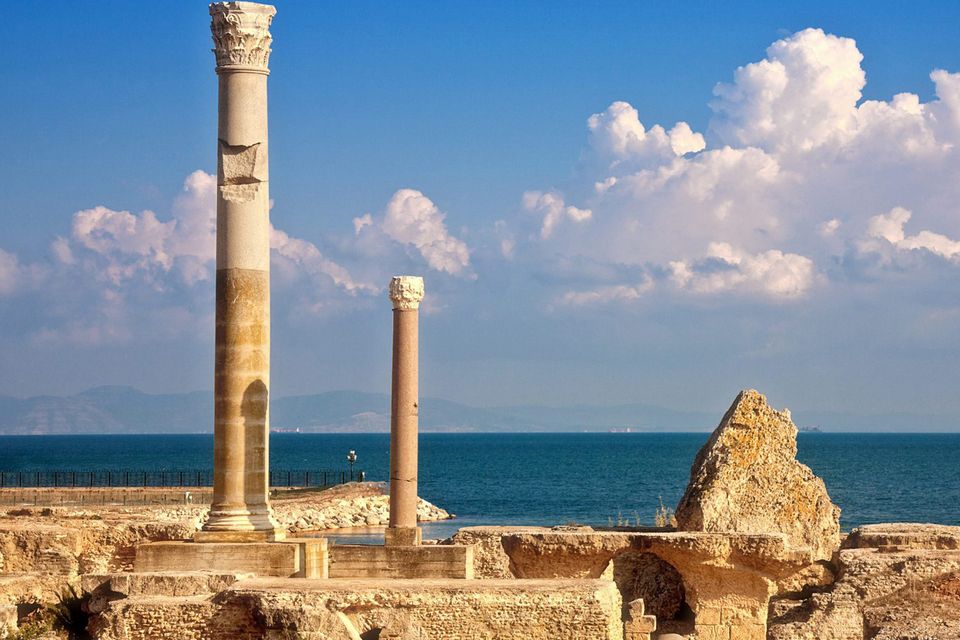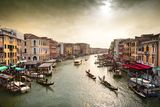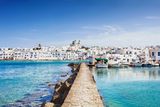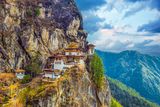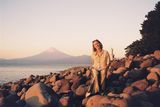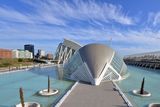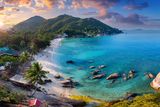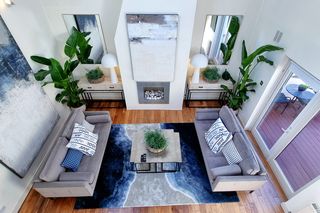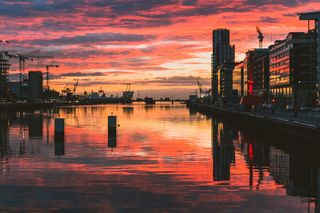Tunisia: Discovering culture and kisses in a sun-soaked land of Kaboul-mania


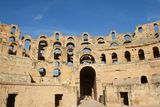
'Everyone today in Tunisia has Karboul-mania", I'm told as I sit and drink coffee in front of the third largest amphitheatre in the Roman world.
Amel Karboul is the new, young, media-savvy female minister of tourism in a country whose six day revolution in 2010 ended in peaceful democracy and the most liberal and secular constitution of any Arab nation. Karboul is determined that the "new Tunisia remembers and values her vast cultural heritage". And what a heritage that is.
It's a beautiful warm Tunisian morning; to my left a group of school children giggle and shout support as two of their group get to grips with the niceties of camel riding, while in front of me a motley group of tourists stop and stare, open-mouthed and entranced at the casual magnificence of the El Jem Coliseum, a Unesco World Heritage Site. Unlike its Roman counterpart, El Jem is access-all-areas. You can climb to the very top of its spectator balconies and imagine gladiators and lions beneath you, ready to battle to the death, purely for your debauched entertainment. Film buffs will know that scenes from the Monty Python film, The Life of Brian, were filmed here, as were, appropriately, scenes from Gladiator.
Also unlike its Roman counterpart, El Jem is relatively quiet; a group of children play gladiators in the centre of the arena while a few spectators sit supine in the sunshine, lazily watching their moves; I wonder if Russell Crowe will emerge from the tunnel below, armoured up and ready for battle. Squint your eyes slightly and it's easy to imagine that you've been transported back to the times when the Roman city of Thysdrus, where El Jem was built in the 3rd century, rivalled Sousse as the second city of Roman North Africa, after the metropolis that was Carthage.
And the whole of Tunisia itself can only be described as a "gem"; a warm, light-hearted, easy-going, culture-sodden and sun-drenched heaven that lies only a few hours from Dublin Airport. A mix of African, Arab and French culture, our guide is adamant that "Tunisia is totally different from other Arab cultures".
MIGHTY CARTHAGE: The scattered remains of the once-powerful sea-based empire of Carthage are set majestically before the Mediterranean, amidst the scent of rosemary and mint
Earlier in the week, we visited the ruins of mighty Carthage, once the leading commercial power of the Mediterranean, whose sailors discovered Britain. Today Carthage is a wealthy suburb of Tunis but the scattered remains of its once powerful sea-based empire are set majestically before the Mediterranean, amidst the glorious scent of rosemary and mint. As the morning sun shimmers on these ancient stones I imagine Hannibal and his elephants tramping here all the way from Spain, only to be vanquished by the Romans.
Nearby, the famous Bardo museum is situated in the 13th century Hafsid palace, in what used to be countryside but now is part of the Tunis' suburbs. Both the building and its contents: Punic, Roman and early Christian collections attest to the cosmopolitanism of Tunisian history; Moorish traditions compete with Italianate influences.
My favourites include the lion-headed goddess Tanis, who bears an uncanny resemblance to her Egyptian counterpart Sekmet; A magnificent mosaic of Neptune and the four seasons, and one of the goddess Venus crowning herself as she is surrounded by six dancing Nereids.
Later we visit the hilltop Arab village of Sidi Bou Said. We walk the ancient, narrow - almost translucent - cobblestone streets; bougainvillea and palm trees proliferate and the Mediterranean view of the Bay of Tunis is picture-postcard. Amidst the blue and white walled buildings, elderly men play dominoes, street-sellers proffer hawks to tourists and pipe-smoking locals watch the world go by as they rest on rickety, raffia covered chairs. It is an oasis of ancient calm.
The following day we head to Hammamet, passing a military base which, says our guide impishly, only appeared on Google maps after the revolution. The news that the local bus drivers are on strike today recalls a more recent vanquishing than that from the Ancient Romans, as we hear tales of how the peaceful civil resistance, now known as the Jasmine Revolution, led to the overthrow of the dictator president, President Zine El Abidine Ben Ali and the formation of a secular democracy.
"Since the revolution" is a phrase on many a proud Tunisian's lips, as they note drily that in the bad old days, the right to strike would not be tolerated, but hey, the taxis are still cheap and plentiful - so why worry! Our guide is loquacious and witty, informing us that Tunisians are more sexually liberated than any other Arab people; that young people here usually live together before marriage and that girls can get their driving licence two years before their male counterparts because, "women are safer drivers".
Tunisians are also extremely tactile. "When they greet each other you can tell how long it is since they last met depending on the number of kisses they bestow; an everyday greeting is two, a few months apart, four, but a separation of a year or more deserves a full eight kisses, cheek to cheek".
CASUAL MAGNIFICENCE: The El Jem Coliseum, a Unesco World Heritage site and the largest Roman amphitheatre in Africa
At the local market, I watch two Tunisian women who must not have seen each other in decades; six, eight, ten kisses! I count like a delighted child, to their obvious amusement. It's early morning and the market is bustling, not with tourists, but locals buying everything from grain - which they will take home for milling - to chickens, which are casually beheaded in front of them. Make your ten year old watch while you say "chicken nuggets" to him, if you're feeling particularly evil.
The nearby fortress town of Hammamet is truly gorgeous; it's not called the Tunisian San Tropez for nothing. A Roman colony in the 2nd century, it has seen Spanish and Turkish rule and the walls of its medina date from the 13th century. It has everything; history and culture combined with a beautiful beach, great bars and restaurants and warm, witty traders who love to haggle in its cobblestoned medina. More importantly, it's a working village, full of local life and characters, not just a tourist spot. We stay nearby at the El Mouradi Hammamet in Jasmine Hammamet - a chic, purpose built designer resort that I know my kids would never want to leave - where, surprisingly, we have the most amazing seafood meal at the hotel's beach restaurant. Exhausted after a morning's sightseeing and shopping, we are only delighted to be fussed over by the effervescent "Sous Directeur" Marouen Kilani and his staff as we sip local wine and contemplate braving the nearby waves.
But history is never far away in this North African country and later we visit the art deco George Sebastian villa, an architectural jewel of a mansion which is now an International Cultural Centre. General Rommel used the house as his headquarters for about five weeks during World War II, Churchill wrote some of his memoirs here, and other luminaries as disparate as Margaret Thatcher and Meryl Streep have visited this beautiful building. With its clear blue swimming pool and sunken marble baths (which allow four people to bathe together) it whispers of a decadence long past and yet remembered between its marble floors and high airy ceilings. Overlooking the Mediterranean, and set in a garden of about 42 acres, the villa is the perfect place to relax, rewind and imagine how the 'other half' used to live.
Further down the coast, we check into the El Mouradi Palm Marina, another family-friendly hotel which opens out onto a beautiful beach front. The nearby city of Sousse had the sense to ally itself with the Romans during the Punic Wars and didn't suffer the same fate as Carthage. Its Arabic minaret and watch tower are in superb condition and its medina houses both open and covered souks; a must for serious shoppers.
"But have you not been to Tatooine yet?", asks my Star Wars-mad ten year old when I Skype him from the hotel. Tatooine, for those of you who may not know, is the home planet of both Anakin and Luke Skywalker from the Star Wars films, four of which were filmed here in Tunisia. I tell him that I'll wait until he visits with me, but until then he can watch a video that Amel Karboul's ministry have just released to the tune of Pharrel Williams' "Happy" which features many of the iconic film characters boogeying around Tatooine (Tunisia). Now that's savvy marketing.
TAKE THREE
Sidi Bou Said
The Arab village of Sidi Bou Said has always been a Mecca for painters and writers. Colette, Andre Gide and Simone De Beauvoir all stayed here, as did Matisse. Paul Klee described staying there as "bathing in a fluid, mother-of-pearl sedative". Macke painted a watercolour of the Café des Nattes, which has become one of the most iconic images of Sidi Bou Said.
Shopping
The souks and bazaars of Tunisia are full of every type of produce you can think of - and some you can't. From pottery and carpets to leather and "genuinely fake" bags and shoes; the fun of haggling with good-humoured traders is a must for any visitor to Tunisia. Often you will be invited for tea and a chat as you discuss prices - set a fair one in your head and stick to it.
The Desert
Because of its idyllic Mediterranean coast we sometimes forget the expanse of desert that is never too far away in Southern Tunisia. The Sahara contains golden seas of sand; giant dunes, desert castles, great oases and Berber villages on top of steep hills. It is ridiculously romantic and can be accessed in hours or just minutes from nearby hotels.
FACTBOX
Carol travelled to Tunisia courtesy of Just Sunshine, Ireland's only independent Tunisian specialist and The Tunisian National Tourist Board.
www.justsunshine.ie 01-9695566/ 01-6854160
www.cometotunisia.co.uk
Aer Lingus now fly directly to Tunisia
www.aerlingus.com
Join the Irish Independent WhatsApp channel
Stay up to date with all the latest news

